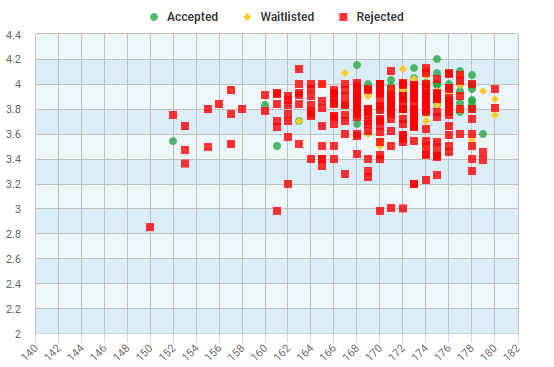Pitt Law School
General Info

The University of Pittsburgh School of Law was founded in 1895, and became a charter member of the Association of American Law Schools in 1900. In 1923, Pitt Law received full approval from the ABA. The School of Law is one of 17 schools comprising the University of Pittsburgh, and is located in the Oakland neighborhood of the city on the main University of Pittsburgh campus. Pitt's Law School faculty has been ranked 21st in the nation based on a standard objective measure of scholarly impact.
Contact information
- (Website) https://www.law.pitt.edu/
- (Admissions Dean) admitlaw@pitt.edu
- (Location) Pittsburgh, PA
Pitt Law School Admissions
Pitt Law School is considered a Competitive law school, which accepts only 37% of its applicants. Comparatively, Pitt is Higher than the average cost for law school.
| Applications | Offers | Matriculated | |
|---|---|---|---|
| Class of 2029 | 1401 | 516 (36.83%) | 134 (9.6%) |
| 25% | Median | 75% | |
| GPA | 3.03 | 3.36 | 3.63 |
| LSAT | 153 | 156 | 159 |
Tuition And Financial Aid
| In-State Resident | Non-Resident | |
|---|---|---|
| Full Time | $32,426 | $40,250 |
| Part Time | N/A | N/A |
Living Expenses
- Living on-campus: $18,574
- Living off-campus: $18,574
- Living at home: $18,574
Important Dates
- Early Decision 1: N/A
- Early Decision 2: N/A
- Regular Decision: N/A
- Application Fee: $65
Pitt Law School Admissions Predictor Tool
Pitt Law School COMPARISON TOOL
Pitt Law School


Pitt Law School Community
Pitt Law School is considered to have a Favorable student to faculty ratio. The average class size for 1L sections is approximately Above Average compared to other law schools. Student diversity at Pitt is Below Average.
Student body
Faculty Statistics
- Full Time: 35
- Part Time: 76
Faculty
- # Female Faculty: 42
- # Minority Faculty: 6
Ratio
13.0 Students
1 Faculty
Housing Options
- On Campus Housing: No
- Graduate Housing: No
- Law Specific Housing: No
Pitt Law School Curriculum
The size of 1L sections affects the quality and consistency of teaching in law schools. Generally with smaller 1L section sizes, students receive more individualized attention. Pitt Law School 1L section size is 19% larger than law schools in Pennsylvania and 14% larger than all PUBLIC law schools.
1L Section Size Comparison
Positions Available in Advanced Courses
- Simulation Courses: 597
- Faculty Supervised Clinics: 241
Students Involved in Advanced Activities
- Field Placements: 108
- Law Journals: 171
- Moot Court/Mock Trials: 0
Attrition Rates
- First Year: 8.3%
- Second Year: 2.3%
- Third Year: 0.5%
- Fourth Year: 0.0%
Pitt Law School Employment
Deciding to attend law school requires a large financial investment with the goal of securing employment upon graduation. The Pitt Law School class of 2024 had an employment rate of 86% with 1% pursuing an additional degree.
Employment Comparison
In 2024, 78.7%% of students reported their employment status 9-months after graduation.
Type of Employment
- Law Firms: 47.0%
- Business: 34.0%
- Government: 7.0%
- Public Interest: 4.0%
- Academia: 1.0%
- Pennsylvania: 72%
- New York: 5%
- Virginia: 3%
Bar Passage Rates
- Reporting: 78.7%
- First Time Takers: 211
- Average School: 90.4%
- Average State: 80.9%
- Pass Difference: 9.5%
Top Bar Jurisdiction
- Pennsylvania: 80.9%
- Passed: 150 of 166 (90.4%)
- State Average: 80.9%
- Difference: 9.5%
